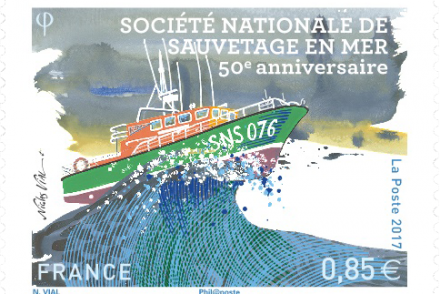The Tagus River
Portugal – It is not easy to condense a comprehensive view of the Tagus River into a small number of images, such is its size and importance. Nonetheless, I believe that the present collection of stamps on the Tagus River, an integral part of the book with the same title, achieves an e ective focus on what are surely some of the most symbolic images and the most important themes associated with this great river.
From the river’s physical geography to associated historical events; from literary portraits dedicated to the Tagus to the establishment and development of the surrounding urban communities; from its role as a waterway of fundamental importance for economic development and natural conservation to the di erent forms culture and traditions associated with it and its historical relevance in cross- -border relations, the Tagus is a river of enormous heritage value with enormous wealth and diversity that deserves to be known, protected and valued.
It is the longest river in the Iberian Peninsula, with a total length of around 1100 km and its watershed is the third largest of the peninsula, behind the Douro and Ebro rivers. The Tagus constitutes the central artery of an extensive region, ranging from the highlands of Serra da Estrela to the Alentejo plains.
From the border with Spain in Idanha-a-Nova to São Julião da Barra in Oeiras, the Tagus River runs through twenty-nine municipalities. Ninety-four local councils, in whole or in part, are located within that part of the river’s watershed found in the national territory, housing a resident population of about 3.5 million inhabitants, more than a third of the current Portuguese population.
The Tagus River has also made us grow accustomed to a water cycle characterised by frequent oods and long periods of drought. The ooding of elds is a potential source of danger and damage, but also a source of agricultural fertility. Economic development, the exploitation of dams and possible climate change-related scenarios must be considered when formulating an integrated and sustainable water use regime for both current and future needs.
The Tagus river valley also features castles and monasteries built by the warrior monks of the Knights Templar, who played a fundamental role in the expansion and defence of the national territory.
Over many years, the Tagus has been the subject of a huge variety of cultural and artistic expression, including in The Lusiads, in which Camões invokes the Tágides, the nymphs of the Tagus river, to help him sing the feats of the Portuguese people. Camões himself lived in Lisbon and, according to tradition, lived also on the banks of the Tagus in Constância.
The Tagus today is di erent to what it was in the past and probably di erent to what it will be in the future, for nature is ever dynamic and evolving. Nonetheless, the images selected for this collection of stamps form a timeless record of a piece of natural heritage which over time has also been marked by several human interventions and the importance of which we have the responsibility of e ectively transmitting to future generations so that it remains a central element in the life of such a extensive part of the nation.




